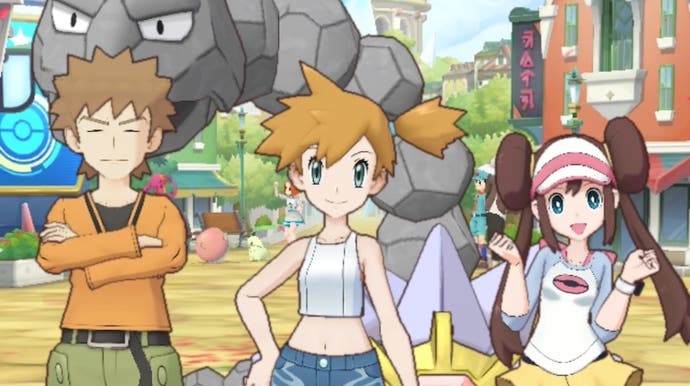Pokémon Masters is a promising, battle-focused take on the series
Bayleef it or not.
At the beginning of the year, The Pokémon Company announced not one, not two, but four new Pokémon games, and the first is finally nearing its "summer" release in the wild. Pre-registration for the game will begin today on both the Apple App Store and Google Play.
DeNA, the developer of Mario Run and Animal Crossing: Pocket Camp, has brought us our next mobile Pokémon adventure: Pokémon Masters. And the developer is shaking up the formula with this one - unlike Pokémon Go, Masters is a much more story-driven experience and has a focus on battling rather than catching.
Pokémon Masters drops you onto the artificial island of Pasio. This island is home to the Pokémon Masters League which you, the player, are destined to become the champion of - with a little help from your friends from every region of the Pokémon world, of course.
It's great news for fans of the mainline games as this adventure will have you meeting up with old favourites from across the franchise's history, battling strategically against other trainers and Pokémon, and even collecting badges to progress (though in this one there's only five to collect before reaching the Masters League).
If you're not totally convinced by Pokémon Masters, or even a little confused about what the game actually entails, then keep reading - we recently went hands-on with an early build and chatted with DeNA about what to expect next.
When you first start Pokémon Masters, you'll create your character with some fairly basic customisation (skin, hair and eye colour) and get partnered up with your very own Pikachu. There's no choosing what Pokémon you start with because having a player character (and partner Pokémon) is pretty much just a device to put you though the story, but you'll get to make plenty of choices when it comes to the trainers you recruit along the way.
But the new faces in Pokémon Masters aren't limited to your player character. It wouldn't be a story driven Pokémon game without a rival or a Pokémon Professor now, would it? DeNA are introducing us to Paulo, a trainer who aims to make it to the Pokémon Masters League, and is described as "an exceptional student with a strong sense of justice", who's always one step ahead of the main character.
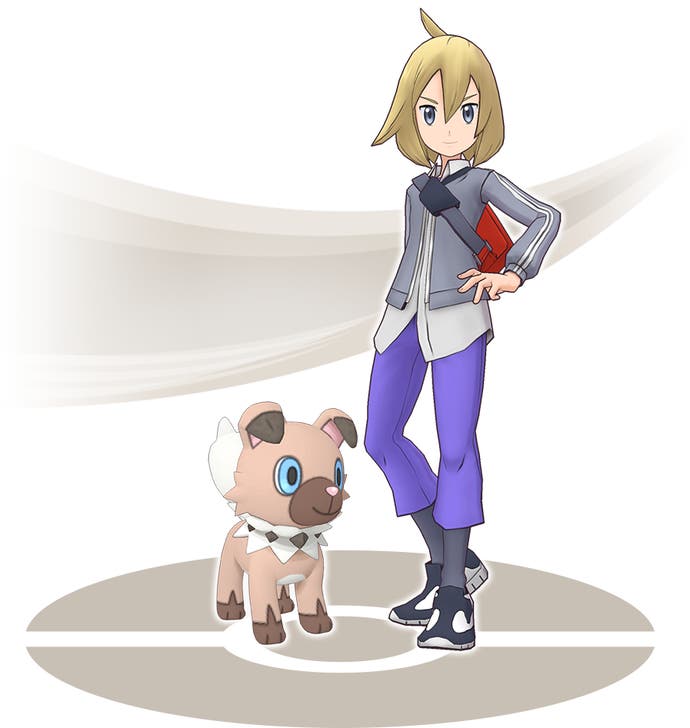
We'll also meet Professor Bellis, the Pokémon Professor on the island of Pasio, as well as Lear, Sawyer and Rachel. Lear is said to be the prince of an unknown country who built the artificial island of Pasio "in order to conquer his own weakness". He's teamed up with Rachel and Sawyer who, I'll be honest, look an awful lot like henchmen.

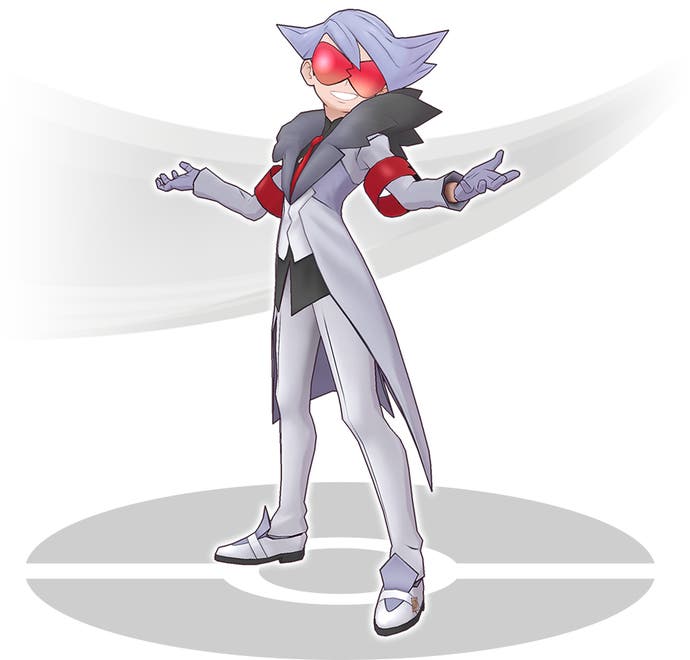

As you travel Pasio, you'll meet up with many other trainers and their partners, called Sync Pairs. This is one of the highlighted points of Pokémon Masters, as each Sync Pair you come across will be an iconic duo from a previous Pokémon game - my personal favourite being Barry and Piplup, but I came across a number of gym leaders and Elite Four members while playing, like Liza and Lunatone from Ruby and Sapphire, and Marshall and Conkeldurr from Black and White.
Something I noticed while playing is some of the trainers are considered Boss Fights, and these tend to be the ones you can recruit after defeating them in a battle. You'll also get a form of Pokédex for the Sync Pairs, so you can keep track of who you've collected so far.

Sync Pairs specialise in one or two different move types, like electric or rock, and one of three different battle roles, Strike, Support or Tech. Strike pairs specialise in attack, Support in buffing allies, and Tech in debuffing opponents. As someone who never bothers to teach their Pokémon moves that aren't attack moves, I found these roles actually made me strategise a lot more as the different combinations are interesting to explore.
There are 65 Sync Pairs to gather and recruit to be part of you team, and a few different ways to collect and unlock them.
"Unlock? In a free-to-play mobile game? I know what that means!" I hear you cry, but before we light the torches and grab the pitchforks, most of these trainers are unlockable through the game's story. No need to mention the 'm' word just yet. Another way to get Sync Pairs will be to participate in live events, which will presumably happen periodically like those in Pokémon Go, though we haven't been given any specific info on these just yet.
Microtransactions come in when you want to do Scouting Missions. These missions will cost you a certain amount of in-game currency - 'gems' - and will randomly give you a Sync Pair out of the 65 we can get so far. I did a couple of scouting missions with the in-game currency I'd been given to mess around with, and got a bunch of Gen Four gym leaders like Crasher Wake and Clay, as well as a few duplicates. No worries there though, as getting duplicates of a trainer levels up their Sync Move (a super special Pokémon move), so you aren't losing out on anything.
Sync Pairs will level up from battling generally, increasing their stats, but if you want them to grow stronger faster there's a Training Area which allows you to complete various courses to improve different skills. There are level caps which will require items to get past, but these are items which can be earned in daily challenges and training so it doesn't seem like it's going to be too much of a grind.
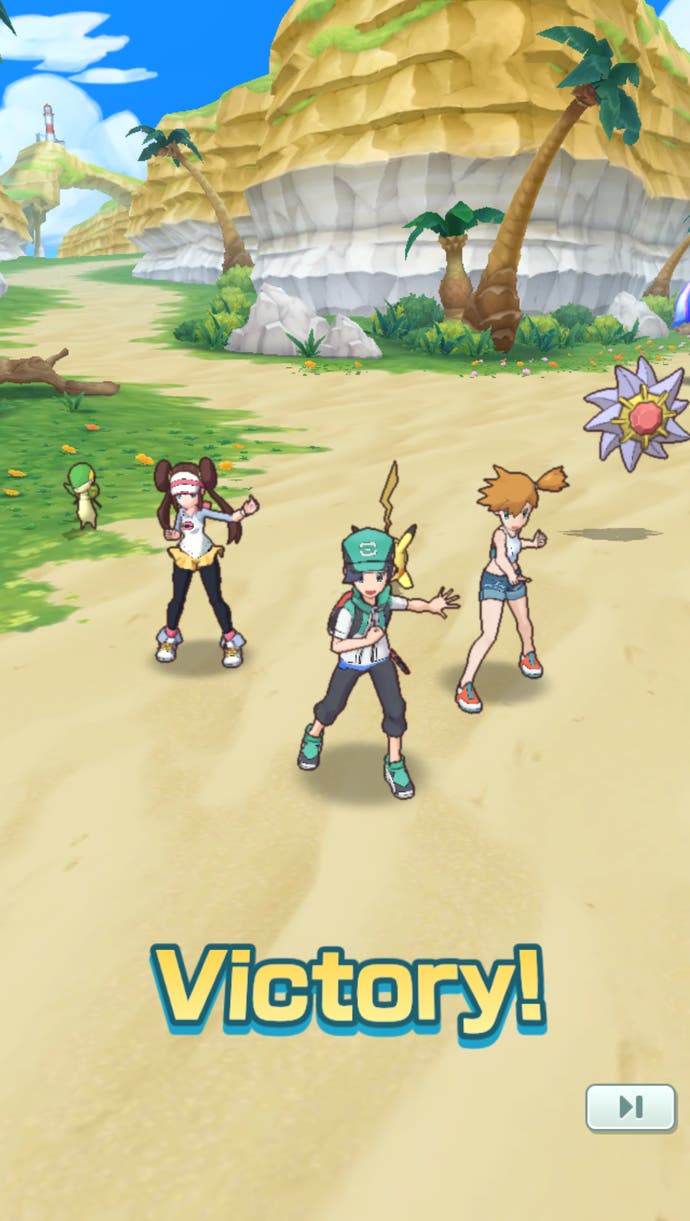
As Sync Pairs level up, you can use TMs learn new moves (up to four). These include moves your Pokémon will use, as well as moves the trainer will use. Trainer moves are unique to that character, and will have a limit to how many times you can use them in battle - generally this is around two uses, but that's more than enough in the faster-paced battle system. Reaching certain levels will cause Pokémon to evolve, and reaching the final evolution of a Pokémon will allow you to learn a special move.
There is yet another way to make your Sync Pairs stronger, however, and that is by increasing their star level. Each pair has a certain amount of stars (up to five) which indicates their strength. You can use Star Power-Up items to increase their number of stars, which in turn increases their stats.
Some Sync Pairs will have stronger versions of themselves available through wearing their Sygna Suits. In Brock's case, when he dons his Sygna Suit he swaps out Onyx for a Tyranitar. You still only have one Brock however - you couldn't have a Brock with his Onyx and a Brock with his Tyranitar in the same battle, for example.
You'll gain Sync Pairs by coming across them at various stages in the story. The game's producer, Yu Sasaki, said they didn't have anything to reveal at the moment about whether or not having different trainers with you will change the narrative, or if there was one particularly strong pair you should always have with you. But DeNA has taken into consideration how strong trainers are from previous generations and put them into the game's story accordingly.
"We would look at whether someone had been a champion, a member of the Elite Four or a gym leader," Susaki said, "but that doesn't necessarily mean someone who was a gym leader would never be able to beat someone who was from the Elite Four, but it has informed the way we've balanced Pokémon Masters.
"Each of the Sync Pairs we have set up to be unique and interesting, we want people to be able to explore these various different Sync Pairs, so it's not the case that there's one pair that's super strong that will get you through the game, there's a lot of variety in there."
One particular highlight for me was Pokémon Masters' voice acting - though whether these are the VAs from the anime I'm unsure. Still, it's a nice touch to be able to hear the occasional quip from your favourite characters. Pokémon cries, meanwhile, come from the mainline games. (Yes, we're still waiting for a Pokémon game where they exclusively say their own names out loud, I'm afraid.)
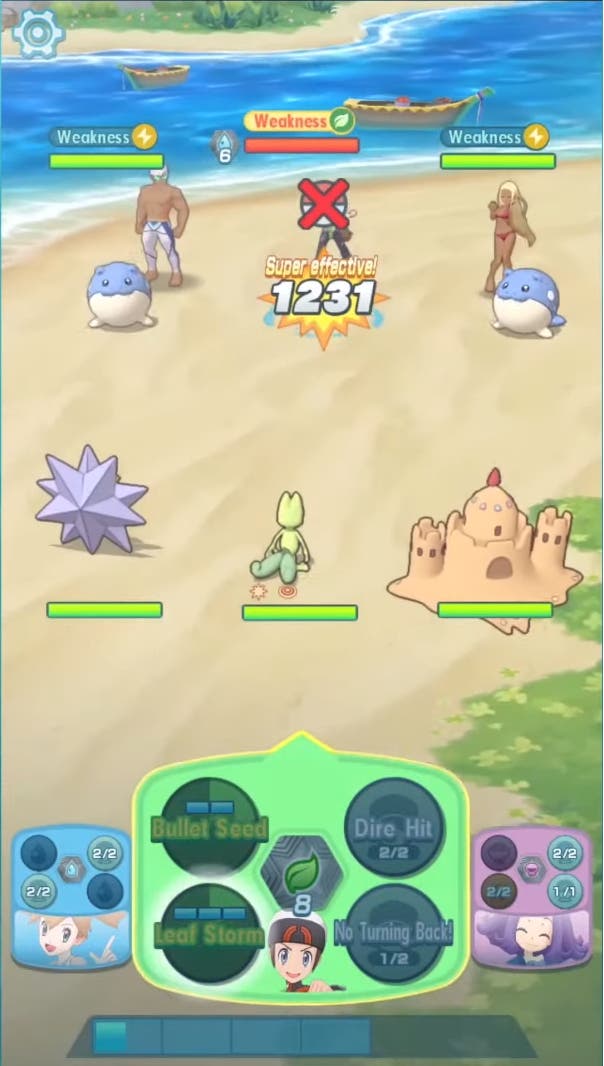
Much of Pokémon Masters' gameplay centres on battles. Real-time three-on-three is a phrase DeNA has thrown around a lot - essentially it means rather than waiting for your turn, you can use a move as soon as you have enough energy in the blue move gauge at the bottom of your screen. Moves will queue and be used as soon as the previous Pokémon has had its turn. There's a small amount of waiting involved for your gauge to fill up before you can attack (though using moves which cost more and make you wait longer have a stronger payoff).
Battles are three-on-three, but not like the triple battles introduced in Pokémon Black and White. In Masters, you aren't restricted to attacking a Pokémon in the space directly opposite or diagonal to you, instead you can attack any Pokémon on the field from any position, which is a lot less limiting than the traditional triple battles were.
Pokémon Masters is a battling experience that works really well on mobile - rather than aimless tapping at the other Pokémon until it faints, it brings back a level of strategy I miss from the mainline games. The fact that they're real-time battles mean they don't drag on, and with three Pokémon (or Sync Pairs, rather) at your disposal, there's a lot of scope to use different strategies.
As you progress through the game's story, your Sync Pairs will learn passive moves that work a lot like the abilities your Pokémon can have in previous games. These can be things like buffs to help you in battle, and it's suggested Sync Pairs can learn more than one passive as well.
After using a certain amount of moves with your Pokémon, you'll get the option to use a Sync Move - an extra powerful attack where the Pokémon and trainer come together to attack, reminiscent somewhat of the Z-Moves from Pokémon Sun and Moon.
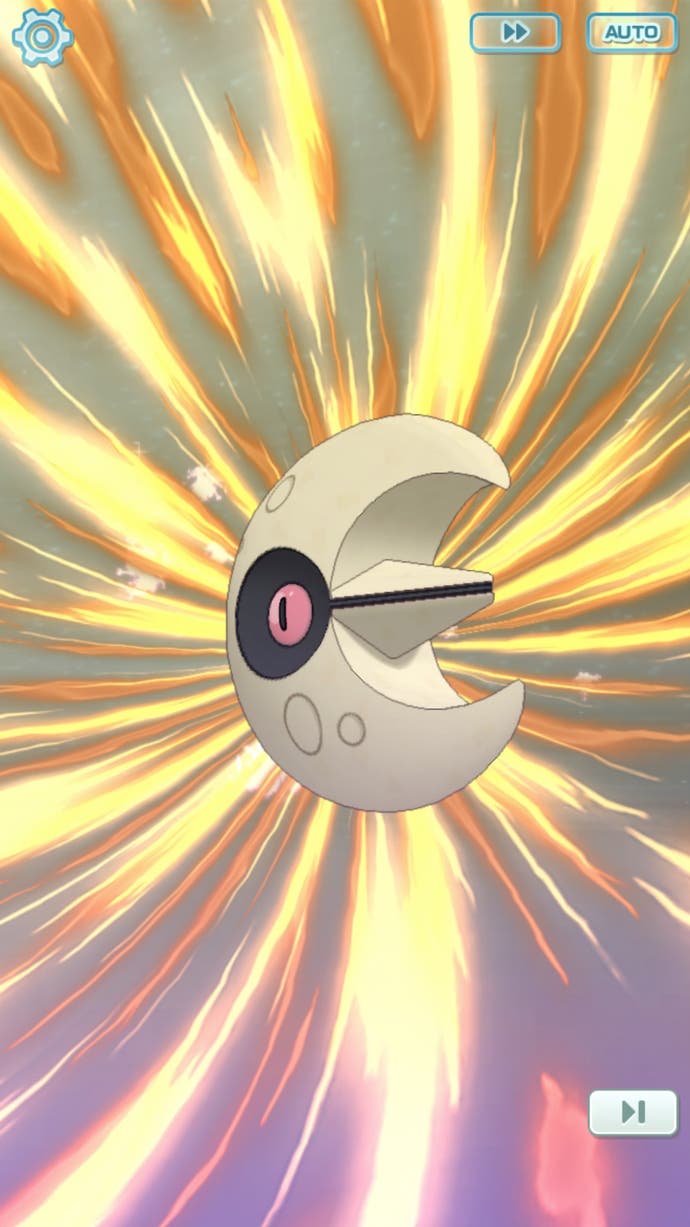
Following suit with Pokémon Sun and Moon, Masters shows you while you're battling what moves are super effective against the Pokémon you have highlighted to attack. It also shows you what types are recommended against the other Sync Pairs before you even start the battle, so you have an idea of what trainers you want in your team. This makes the type matchup strategy elements fairly easy - gone are the days of ripping out the type matchup page from your Pokémon magazine to stick on your wall and memorise. It's clearly a feature for new players that, perhaps coming from games like Pokémon Go, haven't got a lot of prior experience with the main series' strategic battle style.
While there are no plans for any PVP in Pokémon Masters, you will be able to fight cooperatively with up to two other players against super strong AI enemies.
When in single player, you control all Sync Pairs currently in battle. In co-op, each player controls one active pair in battle, while your other two are on standby. This encourages communication with the other players when it comes to switching out your active Sync Pair to make combos.
By attacking together consistently, you'll make attack chains that will build up and allow you to use a Unity Move. When this move activates you'll have a short amount of time to select which Pokémon to use with it, if all players select the same type Pokémon it makes the move even stronger.
Multiplayer isn't available until you hit Chapter 11 of the story, so players can become familiar with the game before jumping into it. It's something which might seem frustrating at first, but which DeNA has decided upon for a reason. Playing the demo build we were automatically put up to Chapter 13 so we had access to all of the features, but in the short time we had to play, it felt very early to try and learn the multiplayer mechanics alongside everything else. For anyone starting Pokémon Masters without having played a mainline game previously, I can understand why you'd need to spend those first few levels figuring things out. After all, there's no Shaymin needing more time to get used to it.
As far as Masters' in-game currency goes, you are able to buy gems with your real money, but you can also earn them by completing challenges. There are overall challenges to complete throughout the game, as well as daily challenges which will reward you with various items for completing them. From what I've seen so far, gems are predominantly used to do the aforementioned Scouting Missions, though it's too early to say how it will be balanced in the full game.

As you can tell, there's an awful lot to get your head around with Pokémon Masters. I found it fun to play, but sometimes struggled to understand who this game will be really for. With features to make the game easy for beginners, but characters that appeal to a more experienced fan base, Pokémon Masters doesn't seem to have a specific target audience - and certainly Pokémon fans now come in all ages. According to Yu Sasaki, that's all kind of the point.
"The Pokémon games have been around for quite a while, there have been a number of iterations, so it's a really broad group of people, especially in terms of age, that have had the opportunity to enjoy the Pokémon games. We want to make sure we're not too focused on any particular part of the Pokémon franchise, we want to cover everyone's interests and make it accessible.
"It's a really unique position we find ourselves in with this game. It's a great opportunity to experiment with the Pokémon brand and expand the fanbase for Pokémon. When we released the trailer for the game, we were able to see a really positive response from the fans and the general community towards the game so I hope people are really excited about it and looking forward to it."
DeNA didn't have anything to say about any possible connection the game might have to either Pokémon Go or the upcoming Pokémon Sword and Shield on Switch, but given the amount of Pokémon games releasing in the near future, I'd be surprised if there's not some sort of promotion planned. It also seems reasonable to assume when the next mainline game launches, we're likely to see an updated trainer roster in Masters to include some faves from the Galar region.
Pokémon Masters is looking to be a solid experience to tide fans over until Sword and Shield and beyond, then, and I for one am pretty excited for a new take on the classic Pokémon journey.
